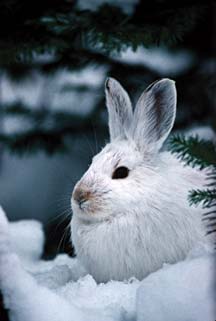
Snowshoe Hare Faces Uncertain Future (start time 6:35). They don’t get much cuter than bunnies. One of the cutest of them all is the snowshoe hare. It’s elusive, and well camouflaged, so you may well never have seen one. To survive, these hares change their coats with the seasons – white in the snowy winter and rusty brown in the summer. So now, some hares’ fur turns white before the snow covers the ground. Think what it’d be like to be naked in public, an easy meal for eagles and other predators. Whether these fragile hares can evolve and adapt to their changing homes fast enough is a question some biologists are studying hard. Hillary Rosner, a local science journalist and author, wrote about the plight of the snowshoe hare in the current issue of High Country News and now talks with How on Earth’s Susan Moran.
Cubelets Robotics (start time 15:00) is an award-winning modular robotics kit created and made in Boulder.  The concept is simple: you take these magnetic blocks and snap them together to make an endless variety of robots with no programming and no wires. You can build robots that drive around on a tabletop, respond to light, sound, and temperature, and have surprisingly lifelike behavior. But instead of programming that behavior, you snap the cubelets together and watch the behavior emerge like with a flock of birds or a swarm of bees. To find out more, How on Earth’s Shelley Schlender talks with Modular Robotics Design Director, Eric Schweikardt. Cubelet theme song by Blorp Corp.
The concept is simple: you take these magnetic blocks and snap them together to make an endless variety of robots with no programming and no wires. You can build robots that drive around on a tabletop, respond to light, sound, and temperature, and have surprisingly lifelike behavior. But instead of programming that behavior, you snap the cubelets together and watch the behavior emerge like with a flock of birds or a swarm of bees. To find out more, How on Earth’s Shelley Schlender talks with Modular Robotics Design Director, Eric Schweikardt. Cubelet theme song by Blorp Corp.
Hosts: Joel Parker, Susan Moran
Contributor: Breanna Draxler
Producer: Shelley Schlender
Engineer: Shelley Schlender
Executive Producer: Shelley Schlender
Listen to the show:
Podcast: Play in new window | Download (Duration: 24:32 — 22.5MB)
Subscribe:


![Leaky Natural Gas Wells [extended version]](https://howonearthradio.org/wp-content/uploads/2012/02/Weld-County-Gas-Wells-niobrara-EOG-Resources.jpg)








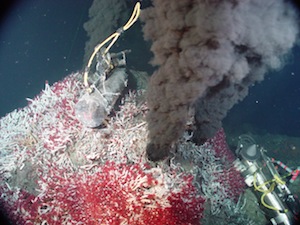
 Underwater Volcanoes (start time 5:45). Most of our planet’s volcanoes are out of sight, and largely out of mind. Hidden under sometimes thousands of feet of water, volcanoes on the sea floor bubble and boil away without our knowledge and largely without our understanding. We talk with Oregon State University volcanologist
Underwater Volcanoes (start time 5:45). Most of our planet’s volcanoes are out of sight, and largely out of mind. Hidden under sometimes thousands of feet of water, volcanoes on the sea floor bubble and boil away without our knowledge and largely without our understanding. We talk with Oregon State University volcanologist  Sleep (start time 15:50). As any mother knows, when children get cranky, one of the best solutions is to “go take a nap.” What is less understood is whether or not those naps can be now and then, or whether it’s important to keep them regular. We speak with an expert who has just published a study that looks at the question of napping among preschool children. Her name is
Sleep (start time 15:50). As any mother knows, when children get cranky, one of the best solutions is to “go take a nap.” What is less understood is whether or not those naps can be now and then, or whether it’s important to keep them regular. We speak with an expert who has just published a study that looks at the question of napping among preschool children. Her name is 
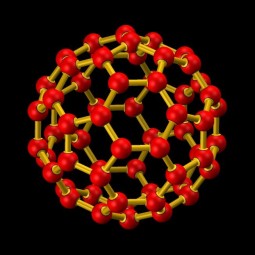

 nicotine patches really help you stop smoking? Shelley Schlender interviews a scientist who says they don’t.
nicotine patches really help you stop smoking? Shelley Schlender interviews a scientist who says they don’t. 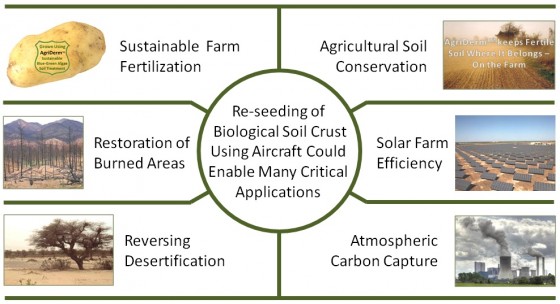
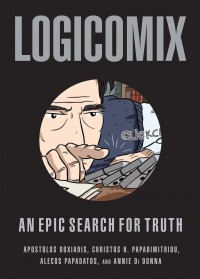




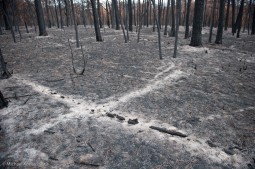


 elley Schlender visited with Colorado State University Scientist and Paleolithic Lifestyle expert
elley Schlender visited with Colorado State University Scientist and Paleolithic Lifestyle expert 

